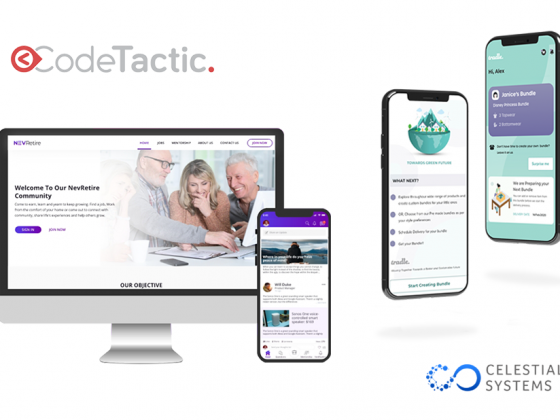Many business owners have no clue as to what marketing is and assume it refers only to advertising. Here are some basics on how to decipher the right budget for your business. The amount that you should allocate towards a marketing budget depends on your market size, cash flow, and who your consumers are. This all may sound elementary, but there is a defined business science behind this.
It’s in the DNA of every business to continually grow. Marketing systems that have been put in place should be designed to attract customers, increase sales and compete in order to sustain their existence. Marketing is the business engine that renews existing customers and funnels in new ones. Unfortunately, many small business owners struggle to know just how much money they need to be spending to make sure that these marketing engines are continually churning.
There is no one-shoe-fits-all answer. So much depends on the type of business you have (retail, online, product, service), your business objectives, and revenue.
Here are some basic tips that should help you to come up with a marketing budget that suits your small business.
General Demographic Profile
In a nutshell, your marketing budget should be a percentage of your gross revenue. A simple guideline is that B2B organizations should spend a minimum of 3 and 5% of their revenue on marketing.
For B2C entities, the proportion is often higher—between 6 and 10%. This is because B2C companies usually require re-investment into multiple marketing channels to reach various customer segments.
In order to finely tune your targeted budget, you need to see what the common denominator for your industry is and what your competitors are spending. There are many online analytics tools that can provide you some basic competitor information; however, knowing their company size will help you understand their marketing budget. It is not essential that you match spending, but you should go after the low-hanging fruits – cost-effective and easy conversions. Any good online consultant will help you decipher the best marketing strategy for your business.
Business development banks worldwide research trends annually and their findings are publicly available. Organic startup businesses spend very little as their revenues are yet to be realized. Usually $9,000 to $24,000 per year. Generally speaking, businesses that are in their early years of consistent revenues average just over $30,000 a year, while those with 19 to 50 employees spend double that amount. Organizations with 50 or more employees lean towards marketing budgets in excess of $100,000.
Visualize – Set defined goals
You need to be clear on your marketing goals. These need to be measurable and very specific. For example – Do you want to get more visitors to a specific page on your website and take a specific action? If so, how many people, what demographic, and over what time period? Alternatively, do you want to get people to visit your physical outlet store for a free sample or consultation? What kind of customers would you most like to attract? How many of them do you want to come in? How much growth can your business sustain with your current business systems?
Setting your goals will get you into the right mindset to plan what needs to be done—and what kind of investment will be needed. Physical retail stores would focus more on search criteria that involves general product or industry, directions, maps, availability hours, etc. Online merchants, on the other hand, would focus more on content and searchable details.
Visualization is an important part of realization… Imagine what your ideal customer base would be like. Think about its demographics and visualize the desired customer personas you want to do business with…
Does your current value proposition cater to your desired customer base? Fixing this is the vital first step. Then you need to clearly explain the following: How will you cater to your customers’ needs and why should they visit your site or visit your retail shop? From there, you can decide on how to better design your marketing campaigns to create online assets/content that is more likely to lead to sales.
Once you’ve defined your marketing budget and set forth your action plan – review it on a regular basis and analyze whether your spending is achieving the goals you’ve set.
Consider all your potential costs
Like any business, marketing has many moving parts. We at CodeTactic specialize in developing and managing digital assets for a business. We recommend allocating your marketing budget to the following categories. You can adjust the amounts over time based on what’s most effective.
Website: The cost of your website includes the original design and development costs including hosting. It also includes paying to keep the content fresh and up-to-date (This keeps Google happy). Ensure that your website developer has included analytics correctly built-in. That way, you can track who’s visiting and from where. This information is crucial and will help you identify and quantify which marketing efforts are paying off.
Social media: Ever since the Google Hummingbird algorithm update; Search engines now use SMM along with SEO for organic page rankings. Set aside some money to invest in online advertising through social media platforms that make sense for your business like Facebook and LinkedIn.
Online advertising: Organic search results are the ideal marketing play for most businesses with an online storefront. However, in some competitive situations, online advertising is also recommended. For search engine advertising like Google Ads, plan for a minimum of $500 per month budget to be effective. As you monitor and refine your online advertising, you’ll be able to become more efficient with your ad spending and budget more accurately.
E-newsletters: Your best customers are your existing customers. So sending regular updates to your clients helps keep your business on top of their minds and encourages repeat business or upsells. Planning for, writing, and using online tools to send out this material all require time and resources; so a small budget should be allotted for this task.
Videos: If a picture is worth a thousand words; a video is worth a million! Every small business should make use of video marketing. The costs involved can include everything from hiring a professional camera crew and editor or simply using your smartphone so you can shoot the video yourself. We now live in an era where people want information fast. Videos are the best tools available for online engagement.
Keep track of costs and adjust regularly
As you work through your marketing budget line by line, it will become clearer what you can afford, according to your priorities. Keep track of your costs and review web analytics regularly.
Assess your marketing budget quarterly and annually to see if your projections are aligned with your actual spending. By monitoring your marketing costs and refining your efforts, you will be able to generate more accurate budgets as time goes on.












